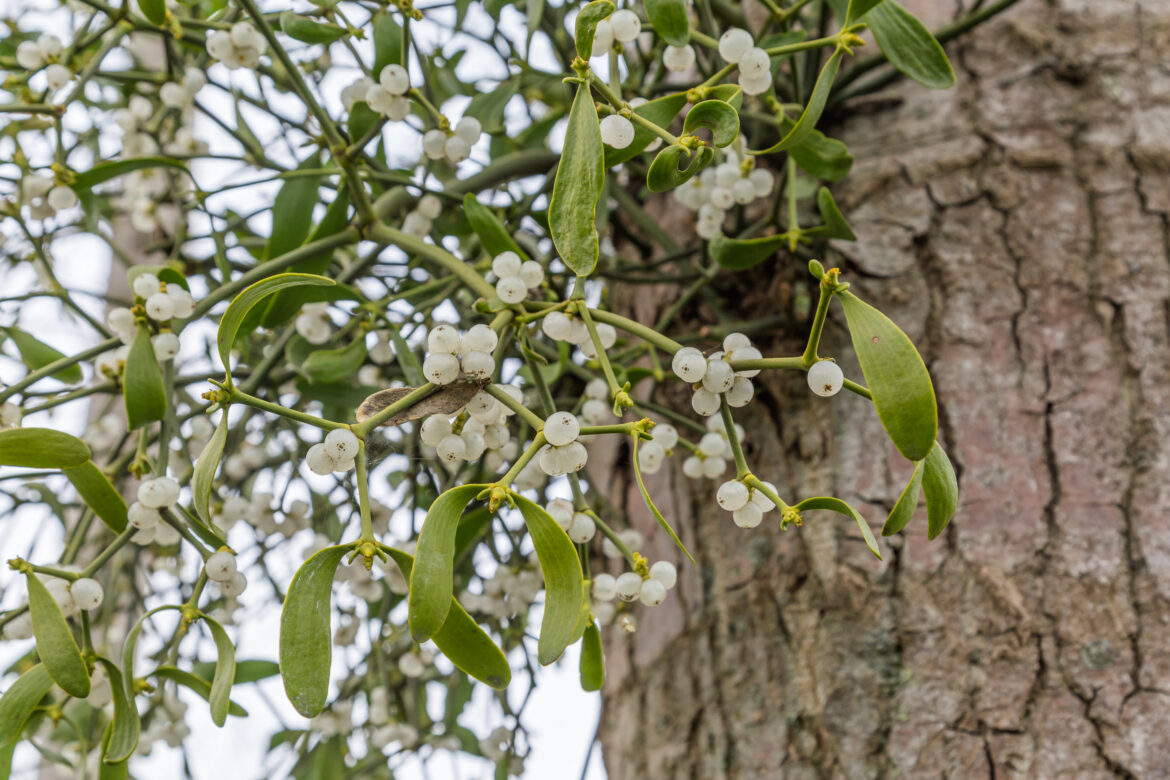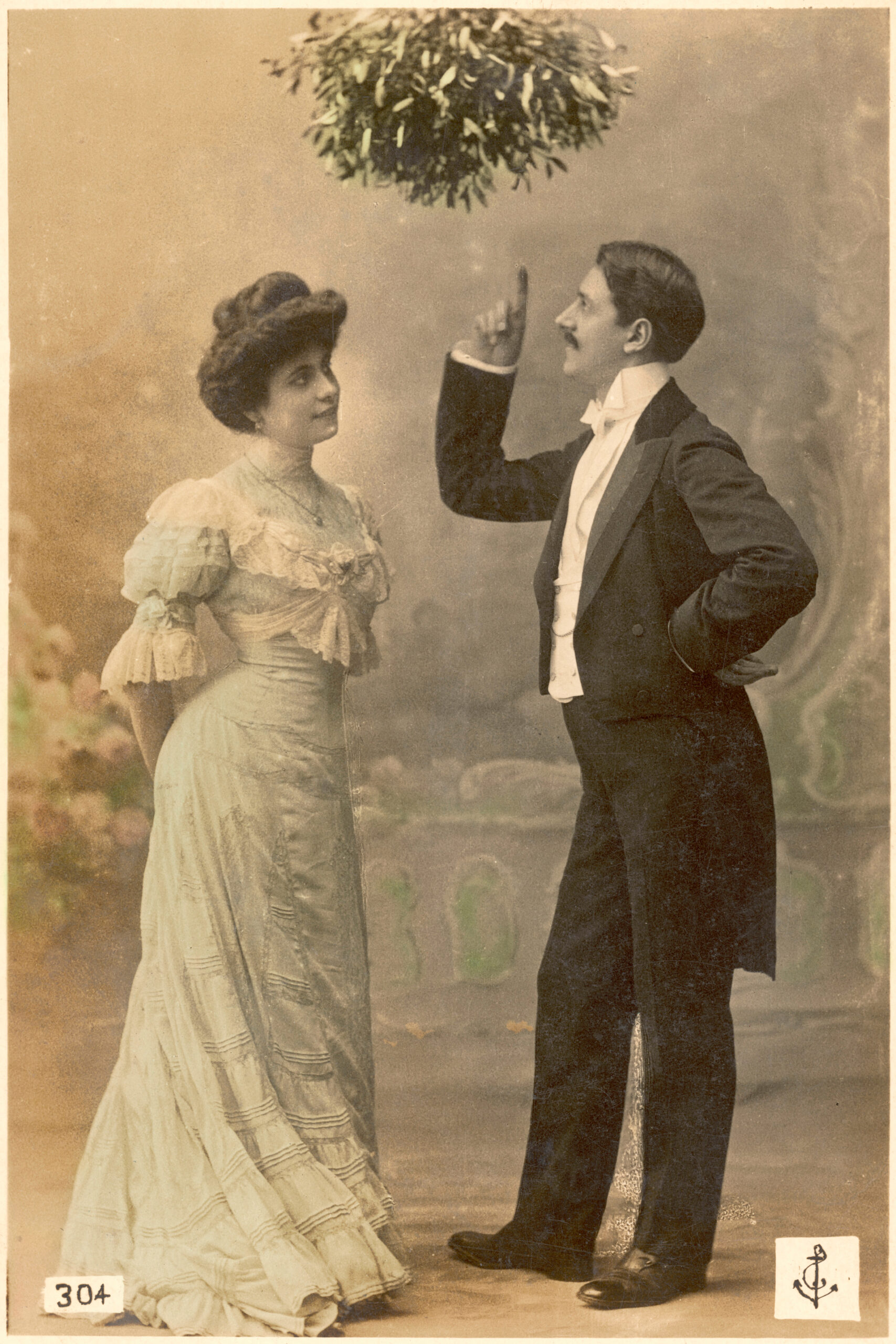
Mistletoe: environmental villain or holiday facilitator of love?
 The myth and story worlds would have us believe that the mistletoe plant is magical. A Hollywood holiday staple, it’s been featured in countless movies and TV shows as a path to getting what one wants: a kiss. Hanging a piece of mistletoe and strategically standing underneath is all one has to do to earn said kiss from anyone passing by. By the rules of Hollywood, said person has no choice: he or she must provide the kiss. Any plant that can achieve such results has to be wonderful, right? Not quite.
The myth and story worlds would have us believe that the mistletoe plant is magical. A Hollywood holiday staple, it’s been featured in countless movies and TV shows as a path to getting what one wants: a kiss. Hanging a piece of mistletoe and strategically standing underneath is all one has to do to earn said kiss from anyone passing by. By the rules of Hollywood, said person has no choice: he or she must provide the kiss. Any plant that can achieve such results has to be wonderful, right? Not quite.
For most not swayed by the magic of the mistletoe myth, mistletoe is considered a semi-parasitic plant that, through its shallow roots that cling to branches, damages and kills trees and bushes. Tree and bush damage is obviously a negative for anyone trying to cultivate erosion control or even shade for a warm location. Which makes festive little mistletoe a bad guy in the environmental world. It even has a bad guy’s name: “mistel” and “tan” from the Anglo-Saxon translates to “dung twig.” Nothing says holiday romance quite like dung!
At the same time that it’s wreaking havoc on trees, mistletoe’s 1,300 species provide food and a space for nesting birds and small mammals. So intertwined is mistletoe with its animal residents that it has evolved to scatter its seeds through a sticky substance dropped onto branches by bird feces. Its benefits to the animal world do not end with small creatures; mistletoe is currently being investigated for use as a possible medicine.
Surprisingly for a species considered a parasite, mistletoe has found balance within stable ecosystems and is not often considered naturally invasive. In fact, it is not abundantly found in woodlands and more mature ecosystems. It is only in agricultural-dominated and disturbed landscapes that mistletoe goes nuts.
Often, there can be a fine line between controlling invasive or parasitic species while preserving beneficial species. At Waterborne, we help our clients with registration of pesticides used to remove invasive species or pests in the environment; however, during the holiday season, we can’t help but think fondly of this overly dramatized and empowered parasite. At this time of year, we turn away from the negatives and embrace mistletoe’s magic.
For more information:
https://insider.si.edu/2011/12/mistletoe-facts-from-a-smithsonian-botanist/
http://ipm.ucanr.edu/PMG/PESTNOTES/pn7437.html
https://ecosystemunraveller.com/connectivity/ecology-of-parasitic-plants/mistletoe-management/
https://www.washingtonpost.com/news/soloish/wp/2016/12/23/how-did-mistletoe-become-a-symbol-of-love/

Waterborne Environmental, Inc. Hired to Create Online Dashboard That Tracks Nutrient Loss Across the State of Missouri
READ MORE

Swimming with Bacteria: Water Quality Concerns at the 2024 Paris Olympics
READ MORE

The Right Tool – Multidimensional Models
READ MORE



